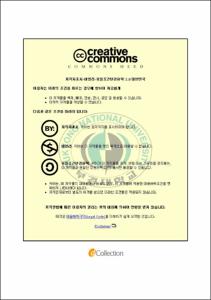가압 이산화탄소와 역미셀을 이용한 Bacillus licheniformis Protease와 Porcine Pancreatic Lipase의 물질전달 및 회수
- Alternative Title
- Mass Transfer and Recovery of Bacillus licheniformis Protease and Porcine Pancreatic Lipase using Pressurized Carbon Dioxide with Reverse Micelles
- Abstract
- The transport phenomena process of Bacillus licheniformis protease and porcine pancreatic lipase between aqueous solutions and AOT (sodium bis(2-ethylhexyl) sulfosuccinate) - isooctane (2,2,4-trimethylpentane) solutions dissolved with pressurized carbon dioxide (CO2) were studied using reversed micelles at a plate system. In this study, it was developed a model for estimating mass transfer of protease and lipase on the basis of data measured from a flat vessel at pressurized two phases system, an aqueous phase containing protein and an organic phase reversed micelles mixed with CO2.
The mass transfer rates were examined for various factors such as pressure and temperature of vessel, pH and ionic strength of aqueous phase, surfactant concentration of organic phase. Also water contents (W0) were determined using organic phase after forward extraction and relative specific activity studied after backward extraction for each enzyme. Mass transfer rates for the extraction of protease and lipase were measured in a stirred cylindrical vessel. The vessel consists of an inner diameter of 60 mm and a height of 140 mm, containing 4 equi-spaced longitudinal baffles and the interfacial area was 2.827 × 10-3 m2. Two co-axially mounted impellers which were driven independently by magnetic drive were used. In all experiments, the impellers rotated in the same direction. A water jacket was used to control temperature in the range of 25~45oC. The CO2 pressure in the vessel was regulated by high pressure controller.
In the protein extraction utilizing the reversed micelles process, dissolving CO2 in the organic phase improved the mass transfer rate of protease and lipase in the aqueous phase compared with atmospheric condition. Mass transfer coefficient, K was shown the highest value for each enzyme at the experimental conditions as follow: 65 bar of pressure and 35oC of temperature in the vessel, pH 3 of the aqueous phase, ionic strength 0.1 M of KCl, 20 mM of AOT concentration in the organic phase.
Resulting of diminishing the interfacial tension between aqueous and organic phase by pressurized CO2, the protease and lipase of the aqueous phase was able to be transferred to the organic phase easily. Also in this study, it was founded lipase was more effective enzyme than protease because of high K value and recovered enzyme activity.
- Issued Date
- 2007
- Awarded Date
- 2007. 8
- Type
- Dissertation
- Publisher
- 부경대학교 대학원
- Alternative Author(s)
- Park, Ji-Yeon
- Affiliation
- 부경대학교 대학원
- Department
- 대학원 식품공학과
- Advisor
- 전병수
- Table Of Contents
- 서론 = 1
이론 = 4
1. 역미셀의 정의 = 4
2. 역미셀 추출의 원리 = 4
3. 물질전달이론 (Mass Transfer Theory) = 9
재료 및 방법 = 12
1. 재료 및 시약 = 12
2. 실험방법 = 12
결과 및 고찰 = 24
1. 단백질 농도 결정 = 24
2. 정추출(Forward extraction)의 물질전달 = 24
3. 역미셀 유기상의 수분함량 = 38
4. 역추출(Backward extraction) 후 효소활성 = 45
5. 정추출 및 역추출의 효율 = 52
결론 = 62
Nomenclature = 64
참고문헌 = 65
- Degree
- Master
- Files in This Item:
-
-
Download
 가압 이산화탄소와 역미셀을 이용한 Bacillus licheniformis Protease와 Porcine Pancreatic Lipase의 물질전달 및 회수.pdf
기타 데이터 / 1.22 MB / Adobe PDF
가압 이산화탄소와 역미셀을 이용한 Bacillus licheniformis Protease와 Porcine Pancreatic Lipase의 물질전달 및 회수.pdf
기타 데이터 / 1.22 MB / Adobe PDF
-
Items in Repository are protected by copyright, with all rights reserved, unless otherwise indicated.